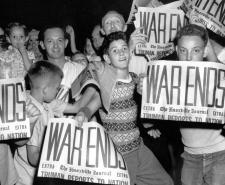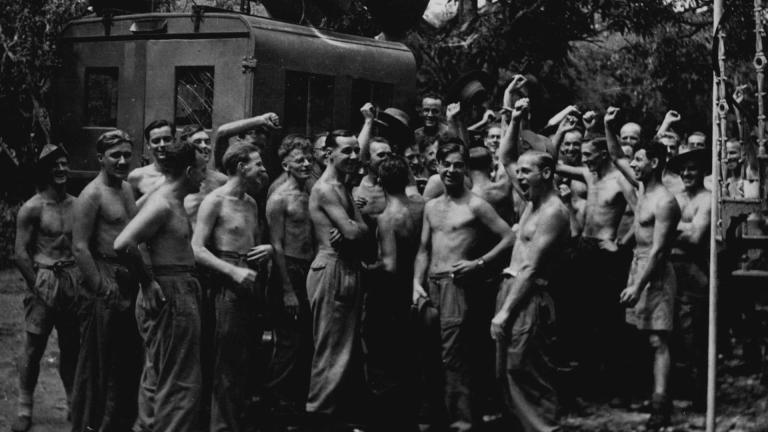
Read more about WW2

When VE Day arrived on 8th May 1945, the UK breathed a collective sigh of relief – Germany was defeated, Europe was liberated, and victory seemed at hand.
What few remember now, though, is that the fight in Asia raged on. For Britain, the war didn’t truly end until VJ Day (aka Victory over Japan Day), in August 1945, when Japan surrendered.
And in that final push, British forces played a crucial, but often forgotten, role. In this article Sky HISTORY delves into Britain’s forgotten victory in VJ Day.
Following Germany’s collapse, Britain remained committed to the vast and brutal struggle against Japan in Southeast Asia. Over 415,000 Commonwealth troops – from Britain, India, Burma, Africa and Australia continued to battle Japanese forces in the Burma Campaign.
One of the hardest-fought turning points came when British-led forces halted Japan’s advance into India at Imphal and Kohima, two battles now often called the 'Stalingrad of the East'. These victories marked the beginning of a slow but decisive push back into Burma and towards eventual victory.
While ground troops battled their way through dense jungle, the British Pacific Fleet (BPF), sometimes dubbed the 'forgotten fleet', played a key but underappreciated part in the later stages of the war.
From early 1945, British aircraft carriers, battleships and cruisers joined American forces. Together, they launched assaults on Japanese strongholds, including strikes on Okinawa and the Japanese home islands.
Operating under U.S. command, the BPF showed extraordinary resilience. Their carriers, reinforced with steel flight decks, could withstand kamikaze attacks better than their American counterparts. A fact that proved crucial in the intense air battles leading up to Japan’s surrender.
Despite limited resources and long supply chains, the British fleet remained a steady contributor to the Pacific war effort until the very end. This proved that Britain’s influence extended far beyond the European theatre.
On the 6th and 9th August 1945, the United States dropped atomic bombs on Hiroshima and Nagasaki. These devastating attacks, combined with the Soviet Union's entry into the war against Japan, led to Emperor Hirohito's announcement of Japan’s surrender on 15th August. The surrender was formally signed on 2nd September 1945.
In the UK, Prime Minister Clement Attlee addressed the nation: 'The last of our enemies is laid low'. Across the country, bells rang out, flags were raised and crowds gathered once again in Trafalgar Square.
But the mood was more subdued than VE Day. The relief was real – but so too was the weariness, and the knowledge that thousands of British families still awaited the return of loved ones, or news of those who never would.
For the thousands of British servicemen captured during the fall of Singapore and Malaya in 1942, VJ Day marked liberation after years of suffering in brutal POW camps. Held in appalling conditions, many had endured forced labour on projects like the infamous Burma Railway, with some never making it home.
In the years following the war, Britain’s role in the Far East campaign faded from public consciousness. The triumphs of D-Day and the Blitz spirit dominated national memory, while the complex, colonial backdrop of the war in Asia received far less attention.
In the UK, VJ Day is officially marked on 15 August, with major commemorations held on landmark anniversaries, such as in 1995 and again in 2020, the 75th anniversary. Events typically include military parades, memorial services, and the laying of wreaths to honour those who served in the Far East.
The Queen Mother unveiled the Far East Prisoners of War Memorial Building at the National Memorial Arboretum in 2001, a permanent reminder of the campaign and its cost. Yet, in comparison to the annual prominence of VE Day, VJ Day remains a more modest occasion – a footnote, rather than a front-page moment.
This year marks the 80th anniversary of Victory over Japan Day. You can explore more about the events that led up to that moment on VJ Day 80.
Want more updates on amazing stories like this from history? Sign up to the Sky HISTORY Newsletter! Be the first to hear about new TV series, exclusive stories and so much more.